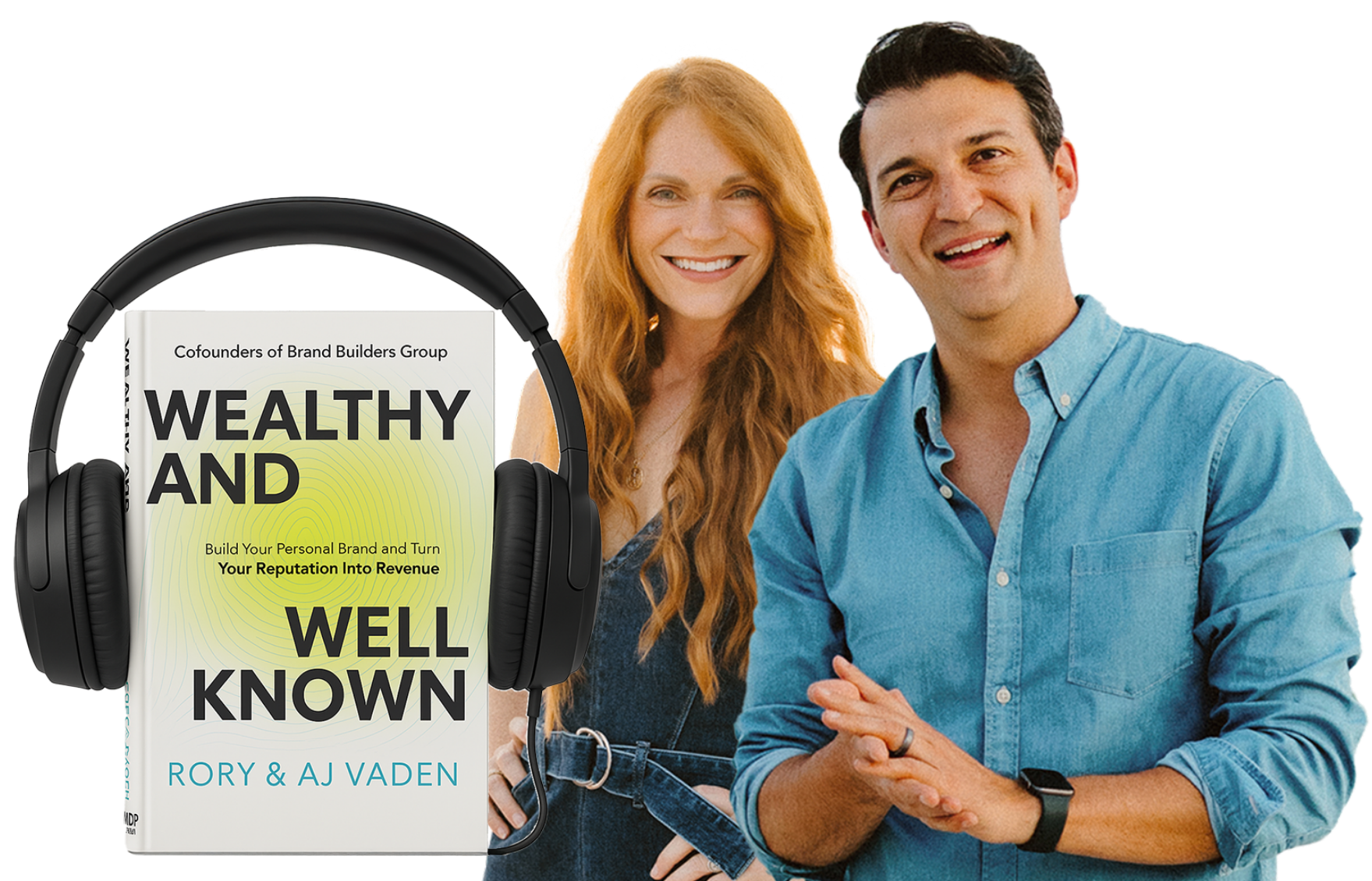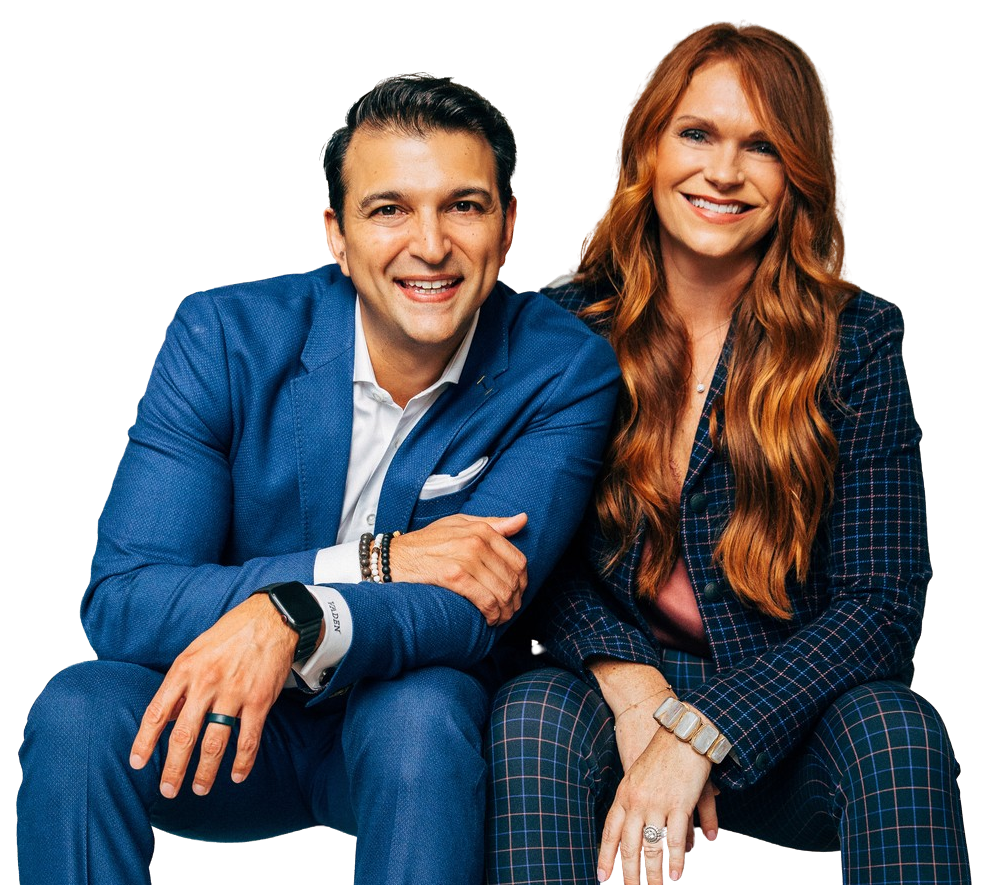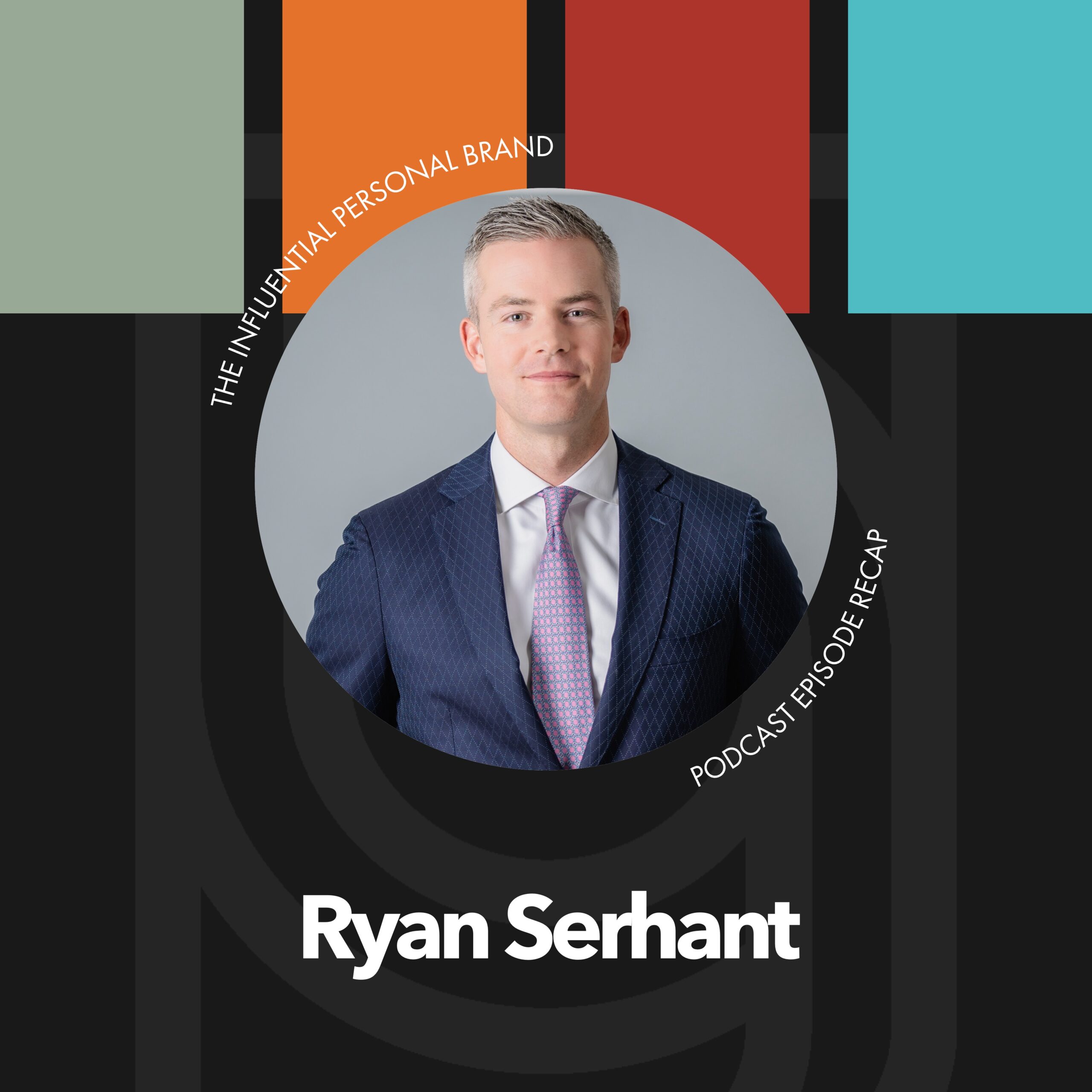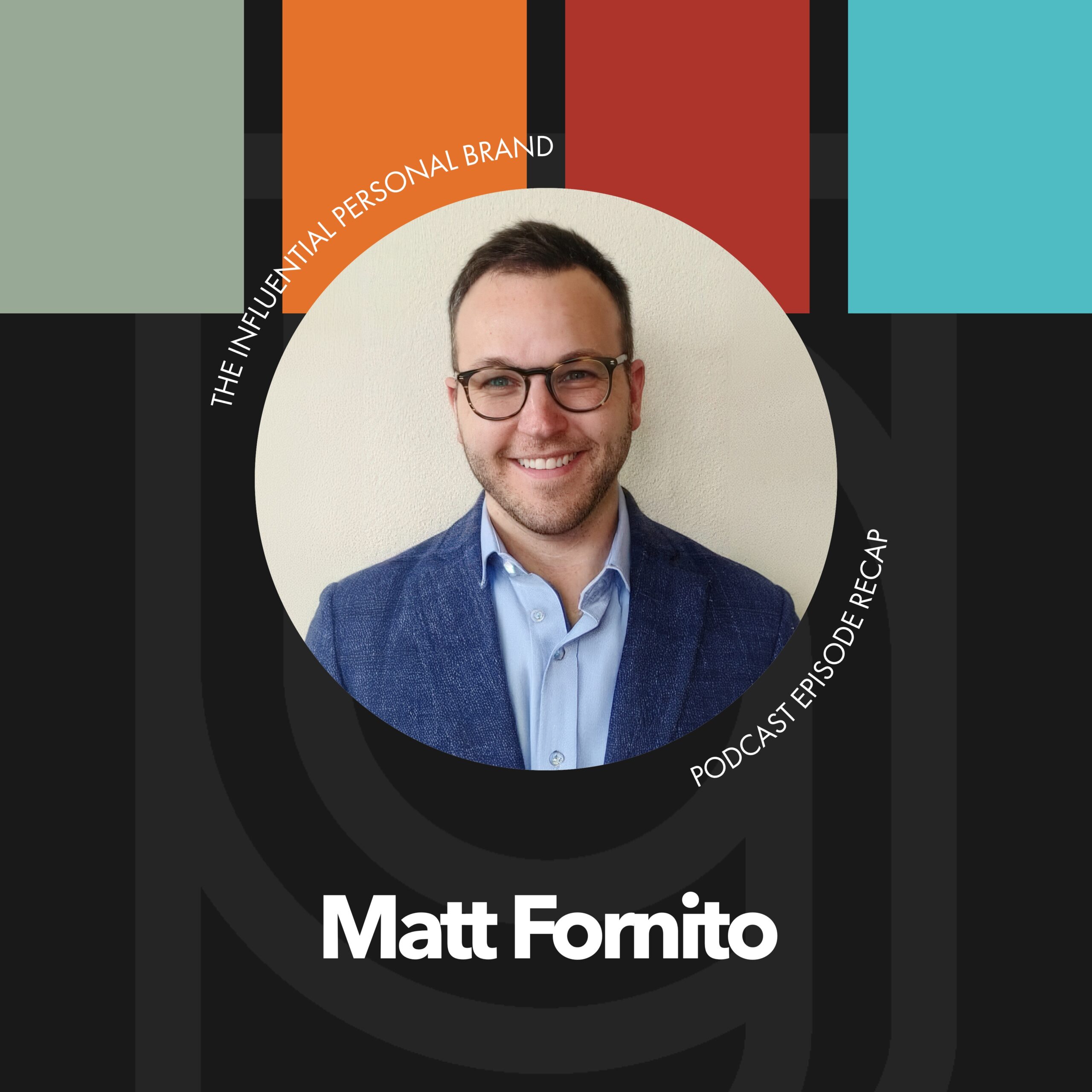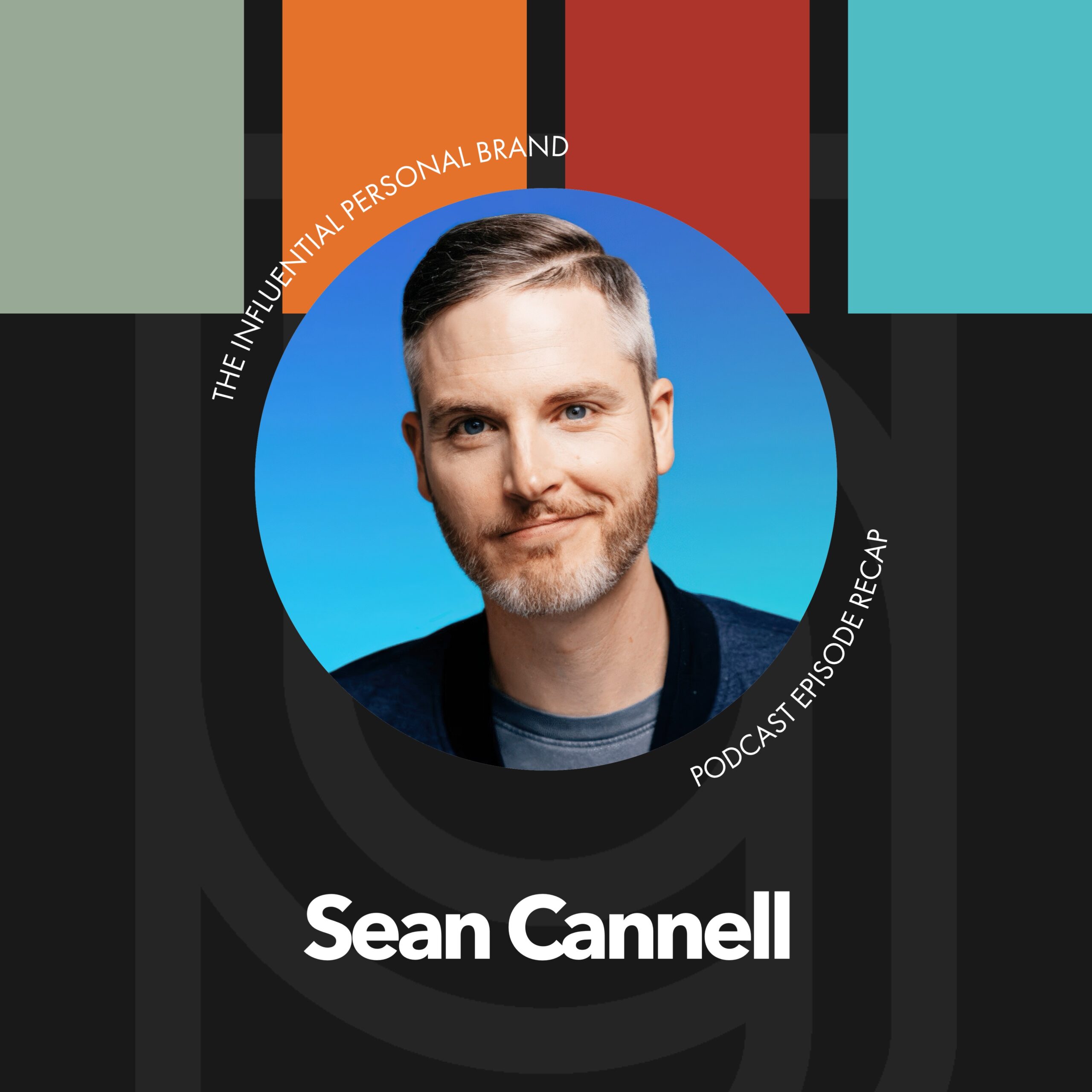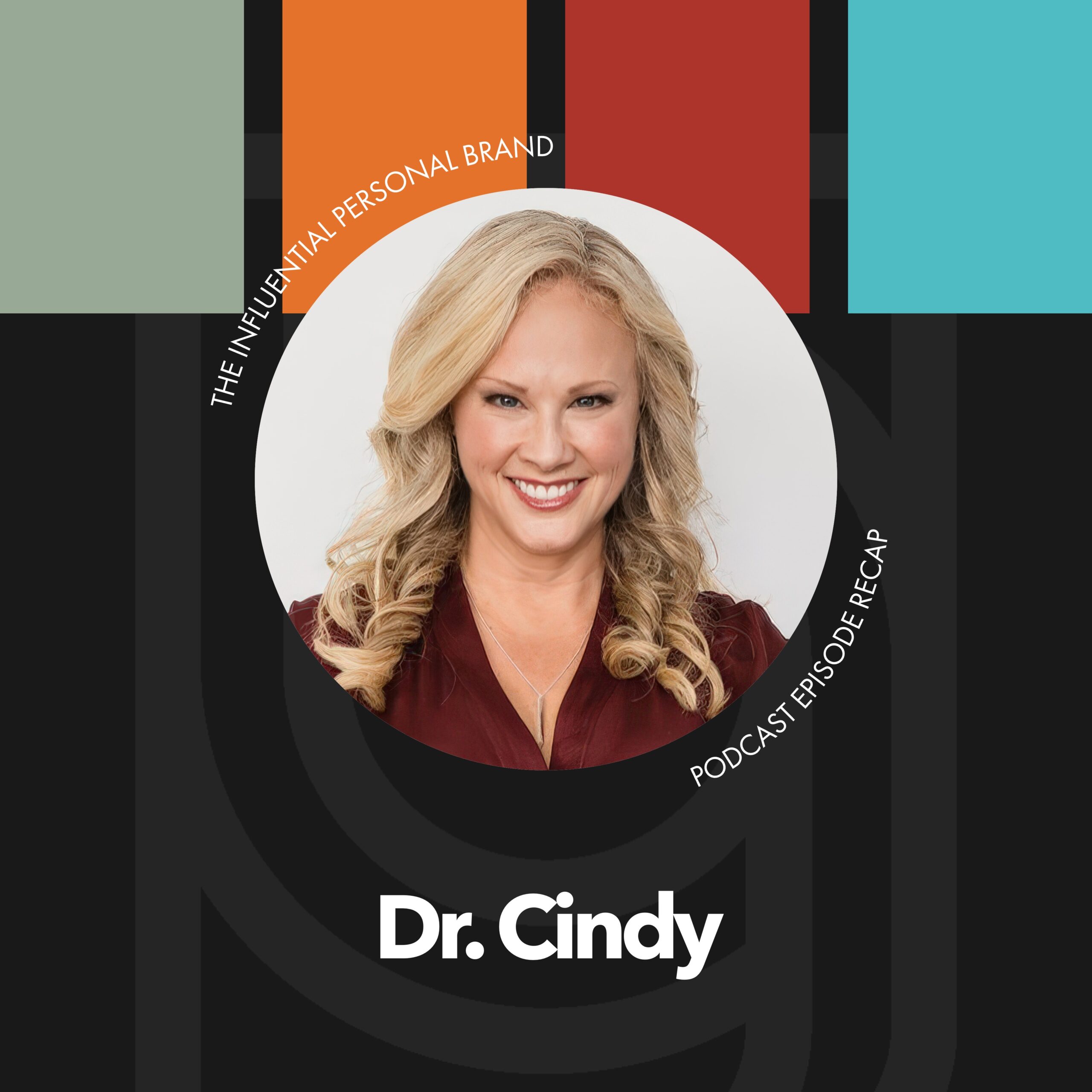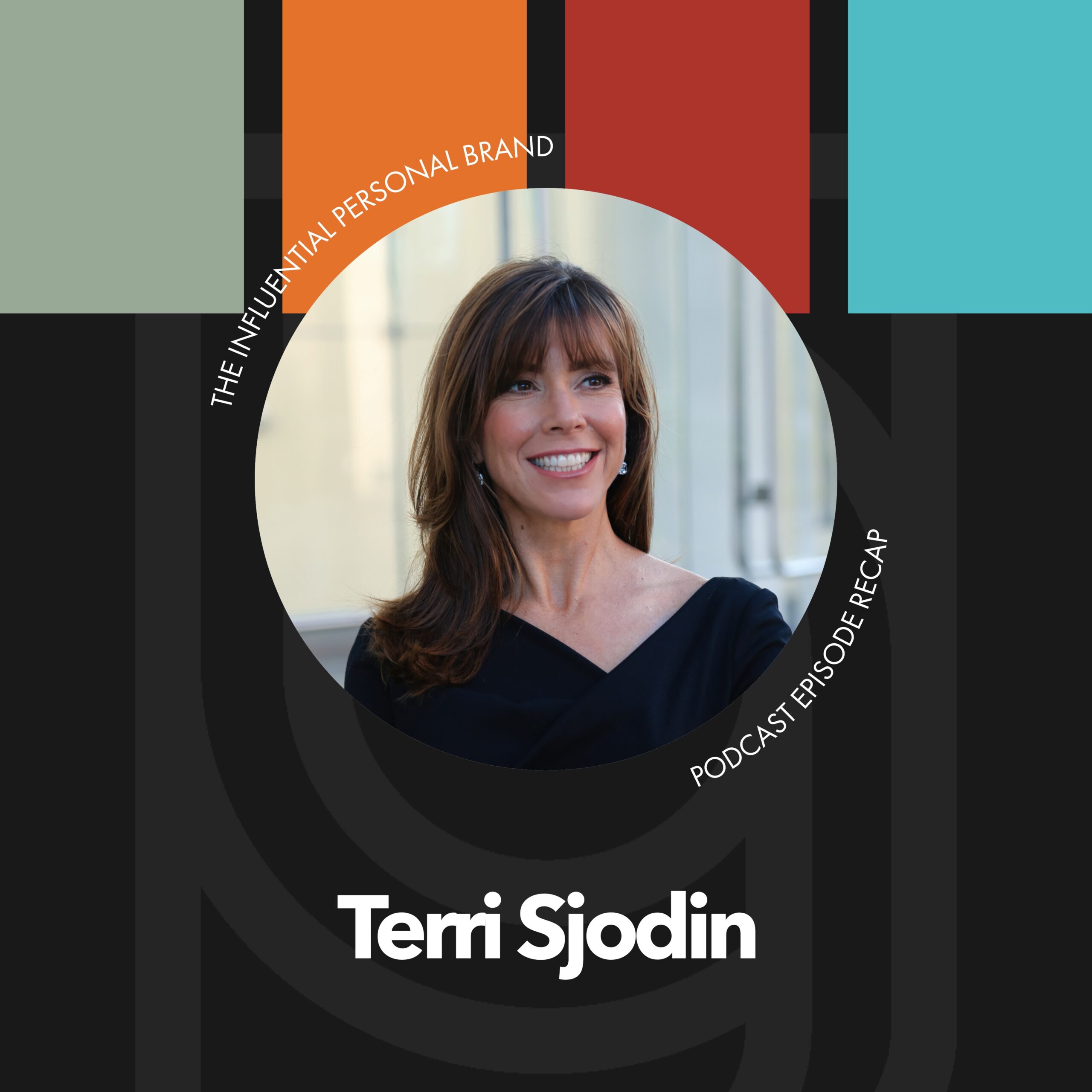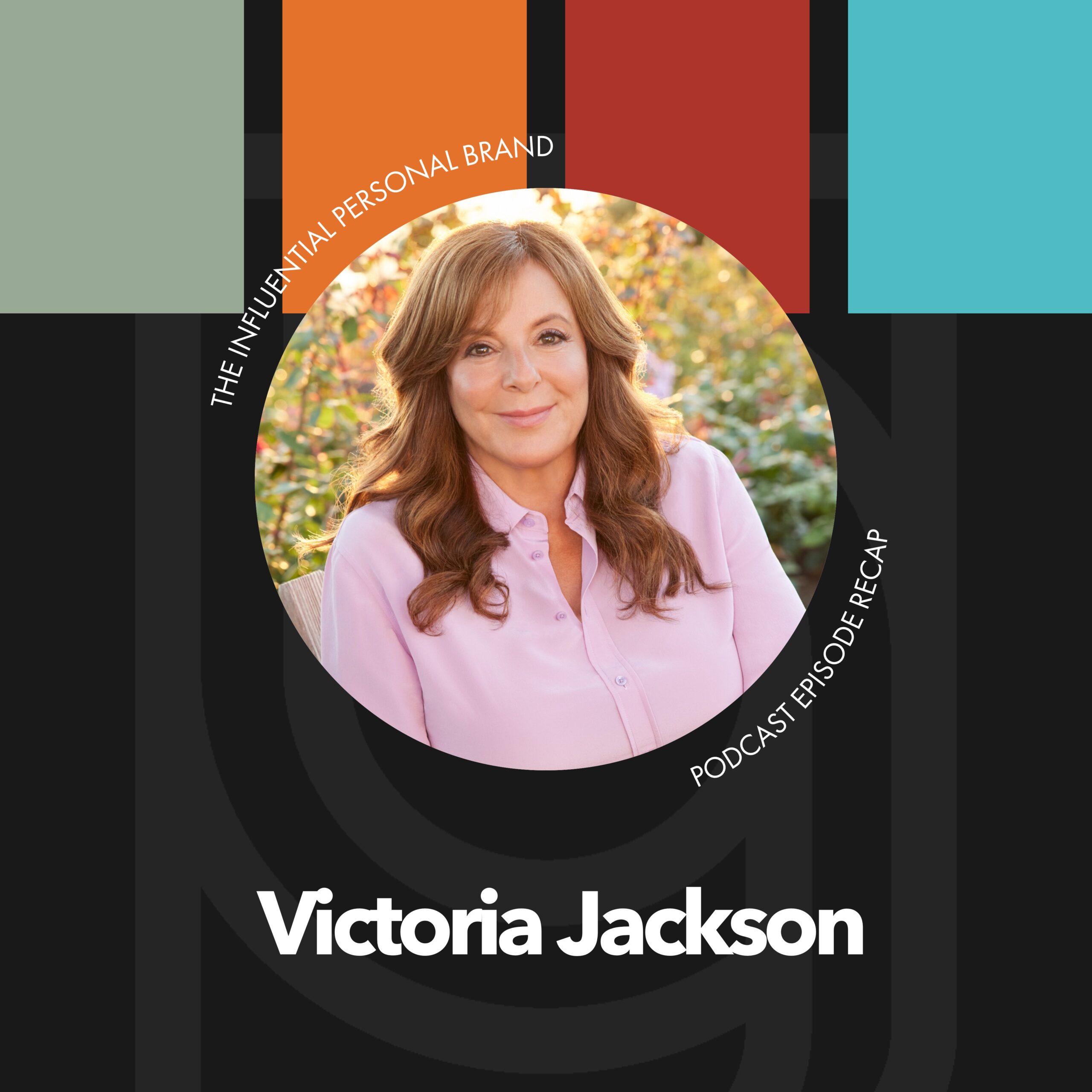RV (00:02):
Vanessa van Edwards. One of the
RV (00:05):
Coolest
RV (00:06):
Sharpest, smartest personal brands that I think is in the marketplace and we’ve become pretty good friends over the last few years ever since sharing the stage together at global leadership summit a few years ago. And she is really, really impressive. And just the science of people is what her brand is all about. And it’s, it’s literally all, all of this about reading people and their nonverbals. And I just, I think it’s fascinating and I think it’s so cool how she’s taken such a specific tri like a specific skill set, you know, all the way down with a very specific type of communication and turned it into such a magnificent personal brand, built it on science and research and data and just, just a really great example and an awesome, awesome person. So this is a recap, obviously of my interview with Vanessa van Edwards, her new book cues is what we talked about.
RV (01:03):
And I mean, just that idea alone of the, the title of the book that are, that there are social signals that we subconsciously send to one another is really powerful. And that’s of course what the whole interview, what her book, her whole book is about. And so I’m gonna, I’m gonna share with you a couple of my highlights and in this case, you know, there’s two big highlights, and then I’m gonna, I’m gonna teach you something that is a part of our curriculum at brand builders group, which I haven’t, I don’t think we’ve ever covered on this podcast. And it’s, it is game changer. Like this technique is the single, maybe the single most powerful technique that we have that we invented. This is our proprietary technique that will make you a master communicator. And I’ll, I’ll tell you what it is. That’s gonna be my third takeaway. But my first takeaway, which is just good to hear, and it’s edifying for what we do and what we teach and you go, how has she built nearly a million subscribers on YouTube, this great social media following she’s consistently selling all these books and built a, a tremendous speaking career. And she said two words aggressively helpful,
RV (02:21):
Aggressively helpful. If
RV (02:24):
You want to get people to pay attention
RV (02:26):
To you, you need to be aggressively helpful. You have to be
RV (02:32):
Relentless. You have to be intentional. You have to
RV (02:34):
Be committed. You have to be dedicated. You have to be ruthless about the idea that your
RV (02:40):
Brand, your media company, your platforms, your podcast,
RV (02:43):
Your social, your YouTube, like your books, your, your, your blogs,
RV (02:48):
Whatever you’re putting out into the world, your keynotes,
RV (02:50):
Your, your
RV (02:51):
Podcast interviews, like when you’re a guest in someone else’s show your webinars, your lead magnets,
RV (02:56):
They have to be aggressively helpful.
RV (02:58):
They to be useful, right? Albert Einstein says you don’t try. Don’t try to be a person of, of influence. Try to be a, a person of, of utility, like be valuable to other people. And that’s the secret. Like that’s the secret don’t hold back. As we say, around here all the time, save the best for first, save the best for first, give away your best stuff. And, and that’s what keeps people coming back. And so it’s just powerful. And again, edifying to have so many like guests on this show who have built huge personal brands that then come and tell us, Hey, this is, this is how to do it. And that’s why we do it is, is because we’ve learned from a lot of them over the years. And we continue to learn from them and, and we can, and we teach you those things, right?
RV (03:49):
So how can you be aggressively helpful? How can you put out content that will dramatically change people’s lives, save the best for first, give it away, make a difference and watch how people show up and come back and share and invite friends. The second thing, which the second, my second takeaway is probably what I would say is my biggest takeaway from this interview. And it is not really what the topic of the conversation was about in terms of how to read people. This though was something I’ve never heard anybody say, at least not so clearly as Vanessa said it. And I almost didn’t ask her this question. And I said, but I, you know, I we’re watching the data of all these book launches, right? So we just, we just helped Tom and Lisa BIU with their book launch launch. We’re helping Eric ed Mylet with his huge book launch right now.
RV (04:44):
We’ve, we’ve, we’ve, pre-sold tens of thousands of units. And so we’re watching all these book launches and, you know, I’m seeing Vanessa clock through every week with several hundred units. And it’s really impressive. It’s very, very hard to do, to sell consistently several hundred units. And so I asked her, I said, Hey, what’s your secret? Like, how do you do the long tail, right? Because we have all this, you know, we have a, a great strategy for how to do a book launch and all the presales and everything leading up to it in like the first eight weeks and, you know, keeping it going. I mean, we’ve got now, in my opinion, perhaps one of the best, if not the best book, launching strategy that there is in the marketplace. And, you know, we got a lot of the results to back that up and prove it with several best selling authors that we have helped.
RV (05:28):
But this long tail long, you know, this long tail is something that I’ve always been super interested in and going man, like what you really want is not, you know, not just the big launch, you want the big launch, you want the big book launch because it lights the spark, right? Like it sets things into motion, but the true perennial bestsellers are these, you know, books that sell several hundred or even a few thousand units every single week for years. And, you know, other than writing a great book and, and hopefully having it propagate, there’s not that much that I’ve seen or heard or learned, or been able to reverse engineer about how to make that happen. And Vanessa shared this great secret, and this was like a light bulb for me. And she said basically that she sells books by SEO, SEO search engine optimization.
RV (06:24):
If you’re not familiar with that term, now we teach SEO. That is a part of our, our curriculum and our, our high traffic strategies training, which is one of our, our phase two trainings. For those of you that aren’t members, we have 12 different topics that are 12 different training, you know, kind of like modules that are they’re each two days. You know, so our entire education takes 24 days just to like go through the full education. It’s, it’s a lot, it usually takes people three or four years to get through it all. But like, so we teach search engine op search engine optimization, but never in connection with selling books. And it’s so simple, right. But it’s so brilliant because you go, how do you create this steady, consistent, long tail sell through of a book? And you go, well, what, what force is there in the world that is steady and consistent and long term?
RV (07:20):
And the answer is search people’s search behavior, they’re search habits. People are searching for terms on a very consistent basis. And if you can figure out what are the terms that people are searching for. And of course, you know, there’s lots of different tools for this, but one of the ones that we, the one that we use internally, which is also the one that sounds like Vanessa uses is called a refs, a refs. And it’s a tool that will tell you, you know, you could type in any term and it’ll tell you, this is how many times this term is searched every, every month on Google. And then you can also go to pages and see which, you know, how, which, how, which, which terms pages are scoring for et cetera, and, and what the average cost per click is. If you want to go out and buy one and what she said, which first of all, this was a tactical tip, which I did not know is that a HFS has a secret tab for YouTube, which is huge, cuz because YouTube is also a search engine.
RV (08:20):
So that means that you can use this tool, which you might already have. And you know, MOS is another one Uber suggests is another one. Like they all, they all, you know, do a decent job of, of what you need to do. But AHS specifically since that’s what we use, I don’t know about the other ones, cuz she didn’t talk about it. But has this a tool that will tell you about YouTube search? So how often are people searching specific terms on YouTube? And then all she did was she made a list of all those terms. And then she created videos that were specific to those questions, which happen every single month, right? People are, are continuously like repetitively searching those terms. And every single month new people are on YouTube searching. And so she creates, she said for like every single book, she creates 20 videos that specifically address these common questions and those specific term search terms that people are looking for. And she creates videos for those where the primary focus of the video, first of all, is to add value, right. To be aggressively helpful. But the secondary vehicle is to promote her book specifically. Right. And all it doesn’t have to be overt. It doesn’t have to be a huge pitch. She’s just adding valuable content. She’s optimizing her presence in the PLA in the marketplace for terms and then suggestively and gently sort of referencing that what she’s teaching is coming out of her book.
RV (09:56):
So genius, so simple, so actionable. So duplicatable, so something that we are going to do. I mean, what, I mean, that’s a huge, that’s a career altering that one idea like could be a career altering idea of just going, because if you, if you write a book that sells several hundred copies every week, like within a few years, that’s a lot of people that have read the book, that’s gonna change the trajectory of your entire career. Like this was a really big tip and not something that I have heard anywhere else. Like out of all the stuff we’ve read that we’ve looked at the courses we’ve been through the, the hundreds of authors that I’ve interviewed, no one has ever given me that tip. So that was a huge, huge tip and one that we are definitely getting into action mode on. So really, really brilliant and smart and simple.
RV (10:53):
So I hope you pick that up and you know, if you’re not selling books apply this to anything, right. You’re selling mouse traps or you’re selling cars or you’re selling battleships, figure out what are the search terms that people are searching for, create VI videos specific to, to those queries optimize the video so that they come up for those, do an awesome video and then make a suggestive call to action to whatever your product of service is like. So we even teach that with content marketing, but just have never thought about it or applied it to a book like it’s, it’s so simple. And it’s like, how did I miss this? How have I never thought about this? Well, UN you don’t UN until, you know, you don’t know until, you know, right. But you go man, one little tip like that, SuperDuper powerful.
RV (11:38):
The third takeaway was something that I’ve heard before. And so I wanted to share with you one of our favorite techniques, and this is something that I personally invented. You know, our team has polished over the years and, and is a formal part of our world class presentation, craft trainings. So the one of our phase three, or excuse me, the third training in our phase in our phase one curriculum is called world class presentation craft. And it applies very much to what Vanessa’s talking about here. And, you know, she said nonverbal communication is 69% of, of communication. And she was talking about how, it’s not the words that you say, it’s your facial expressions. It is your eyes. It’s the, your gestures, your body language, even the clothes you wear, the colors that are around you are all things that communicate in a very clear way.
RV (12:35):
Although, you know, somewhat subconsciously to the people around us. And then she was talking about how our, our vocal pace and cadence is a huge component of that. And so I wanna go ahead and share with you one of our favorite techniques of all time and this, we call this the vocal variety matrix, the vocal variety matrix. And it’s very, very simple, but it’s extremely powerful. So if you were to create a graph where the Y the Y axis was energy, so high, you know, at the top would be high energy at the bottom would be low energy. Okay. and then the Y axis would be like speed, where you know, let’s, let’s say all the way to the right is fast. And all the way to the left is slow. What happens is you have this natural separation of these four distinct quadrants and each quadrant represents a different utility of your voice. And when you master this VO, the, you know, this vocal variety matrix, we sometimes call it the emotions matrix because each different quadrant communicates a different emotion. And it doesn’t matter the words that you say, right? So let me, let me, let me talk this out for you. Right? So for example, quadrant number one is somebody who talks like with high energy, which is often also the volume is very loud and very fast, right? And so you talk like this, and when you
RV (14:00):
Talk really loud and really fast, what you’re doing
RV (14:02):
Is you’re adding a
RV (14:03):
Tremendous amount of energy and emotion and enthusiasm. It doesn’t matter what the words you’re gonna do. Like what the words are that you’re saying, don’t even matter. You’re creating this physiological change in the audience by just talking loud and fast with high energy and high speed that suddenly create excitement and enthusiasm
RV (14:18):
And energy. Similarly,
RV (14:21):
If I talk loud
RV (14:24):
And slow,
RV (14:26):
This
RV (14:27):
Has high energy, loud volume,
RV (14:30):
But slow pace, regardless of the words that come
RV (14:36):
Out of my mouth,
RV (14:39):
You talk like this
RV (14:41):
To create the emotion of respect, you’re commanding authority. You’re, you’re, you’re demonstrating your control, your credibility, your power. And then if I talk low and slow, low energy, low volume, and low speed, it creates a completely different emotional experience, a different energy, one of authenticity, vulnerability, honesty, transparency, connection, and trust. And then if I keep my energy low and I keep my volume low, but then I pick up my pace. All of a sudden I start adding suspense because just by adding, just by talking faster again, regardless of the words that I say, this, isn’t a matter of the words that we’re saying, we’re just talking about delivery here and here. This is what, this is probably the, the most underutilized quadrant of all the four quadrants. But this is somebody who just talks very low, but very fast, but it’s a mental game, right?
RV (16:20):
It’s, it’s mental exercise that forces you to concentrate, to lean in, to create suspense, to be, to be sort of curious, to be preoccupied with like, what’s he gonna say? And like trying to keep up with everything that’s going on and, and notice that no one quadrant is better than any of the others, the magic here, first of all, is that it doesn’t matter what you say, it’s using the vocal variety matrix to determine how you say, because all of a sudden, no matter what I’m saying, this is loud and it’s exciting and it’s fast pace. And then all of a sudden I drop it way down.
RV (16:55):
And I share the lesson that I learned from that story. And what this means for your life personally, is that you have to take this advice and you must go out and execute this behavior, this action. And then I can move on into the next story and set up the next story with back, you know, backstory on the characters and, and saving some time in my presentation by just sort of speeding along, keeping you mentally engaged and forcing you to have to listen, sit on the edge of your seat because of this suspense. And because of the, the way your mind has to be preoccupied with what I’m saying in order to keep up with how fast that I’m talking, but I’m moving through a lot of kind of insignificant details and trivial things just so I can set up the next story, baby. Cuz here we come, it’s getting exciting again.
RV (17:50):
Bam, isn’t that amazing? This is one of the secrets that has shaped my career. I mean, it is one of the biggest things that we coach speakers on when we work with them in world class presentation craft, this is part of, you know, how I created a viral Ted talk and got inducted in the professional speaking hall of fame and you know, became a two time world champion of public speaking finalist, helping people with the art of speaking is one of the things that we do most frequently at brand builders group, both their message, but also the, the mechanics of their delivery. And that technique is called the vocal variety matrix. We’re sharing it here for you for free on this podcast episode. Usually those kind of things, you have to be a paying member to get access to, but I wanted to share that one just as a special bonus giveaway in honor of my friend, Vanessa van Edwards, because of how much content she shared and how much I love what she’s about and just applying one of the techniques that we teach very much to what she is talking about here in the science of people.
RV (18:55):
So I hope you enjoyed that interview. Hey, share this recap edition with someone who needs to hear it. Somebody who you know, is, is trying to build their personal brand and, and the interview as always tell your friends. And if you can leave a review on iTunes or wherever you listen to the podcast that helps us tremendously, you know, we’ll share another ad for that here in just a second, but we really, really need that help. And that’s why we’re here every single week, bringing you the best of the best that we can from our friends and community, and also drop dropping in with our tips and recaps and highlights. So thanks for being here. We’ll catch you next time on the influential personal brand podcast.

